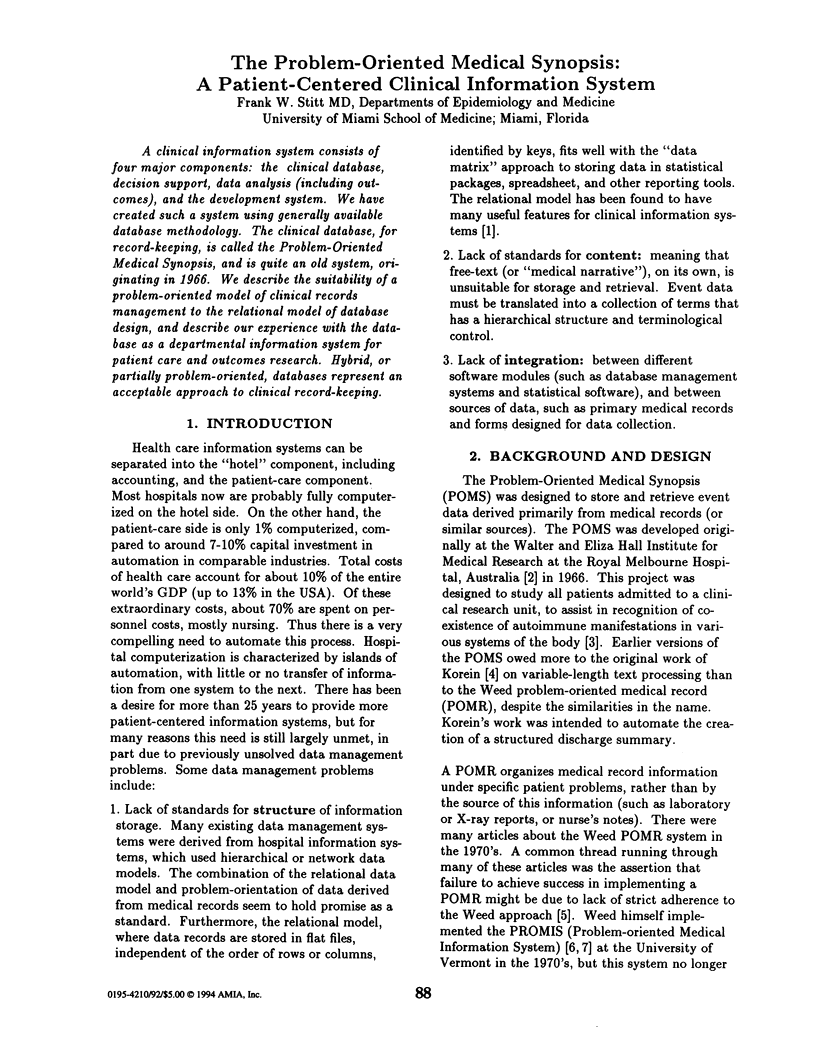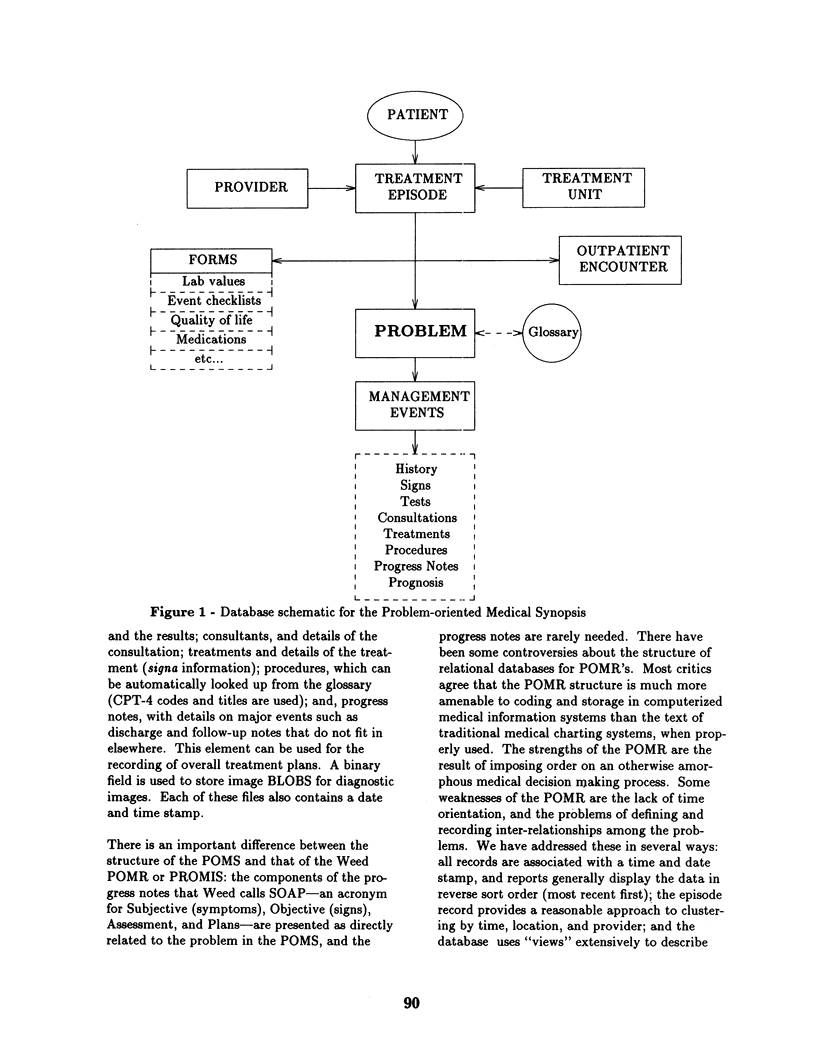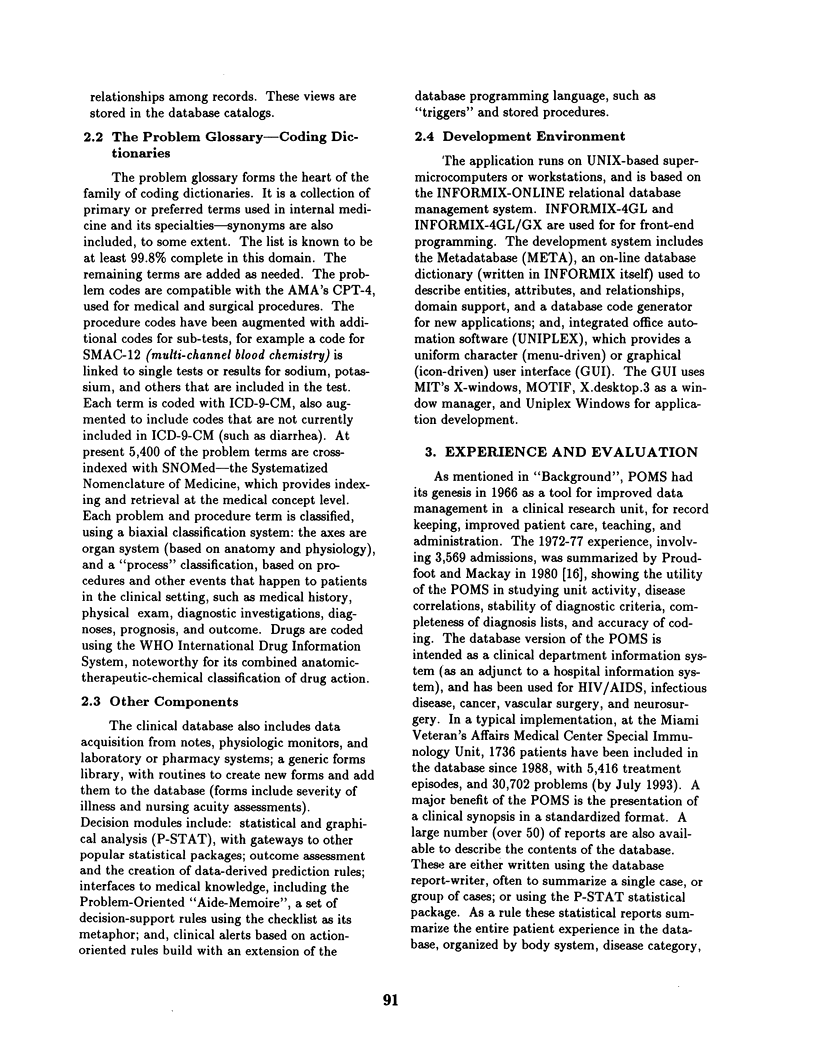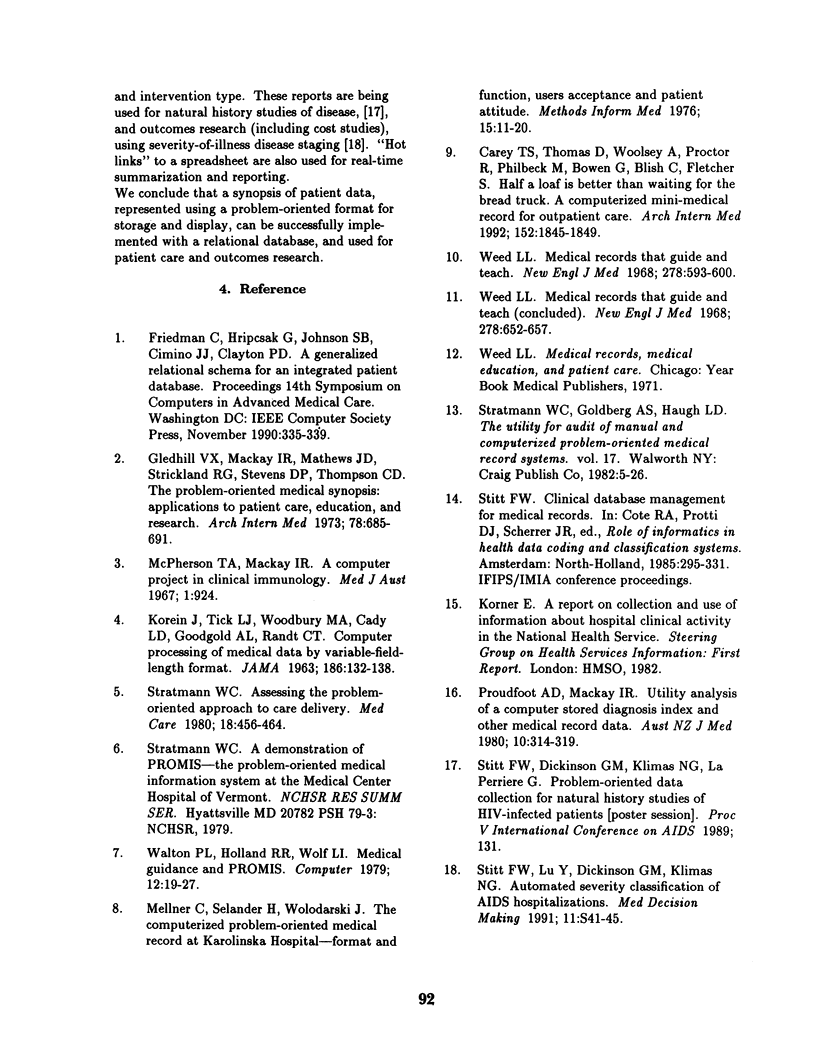Abstract
A clinical information system consists of four major components: the clinical database, decision support, data analysis (including outcomes), and the development system. We have created such a system using generally available database methodology. The clinical database, for record-keeping, is called the Problem-Oriented Medical Synopsis, and is quite an old system, originating in 1966. We describe the suitability of a problem-oriented model of clinical records management to the relational model of database design, and describe our experience with the database as a departmental information system for patient care and outcomes research. Hybrid, or partially problem-oriented, databases represent an acceptable approach to clinical record-keeping.
Full text
PDF




Selected References
These references are in PubMed. This may not be the complete list of references from this article.
- Carey T. S., Thomas D., Woolsey A., Proctor R., Philbeck M., Bowen G., Blish C., Fletcher S. Half a loaf is better than waiting for the bread truck. A computerized mini-medical record for outpatient care. Arch Intern Med. 1992 Sep;152(9):1845–1849. [PubMed] [Google Scholar]
- Gledhill V. X., Mackay I. R., Mathews J. D., Strickland R. G., Stevens D. P., Thompson C. D. The problem-oriented medical synopsis. Applications to patient care, education, and research. Ann Intern Med. 1973 May;78(5):685–691. doi: 10.7326/0003-4819-78-5-685. [DOI] [PubMed] [Google Scholar]
- KOREIN J., WOODBURY M. A., TICK L. J., CADY L. D., GOODGOLD A. L., RANDT C. T. COMPUTER PROCESSING OF MEDICAL DATA BY VARIABLE-FIELD-LENGTH FORMAT. JAMA. 1963 Oct 12;186:132–138. doi: 10.1001/jama.1963.63710020001015. [DOI] [PubMed] [Google Scholar]
- McPherson T. A., Mackay I. R. A computer project in clinical immunology. Med J Aust. 1967 May 23;1(18):924–927. doi: 10.5694/j.1326-5377.1967.tb21739.x. [DOI] [PubMed] [Google Scholar]
- Mellner C., Selander H., Wolodarski J. The computerized problem-oriented medical record at Karolinska Hospital -- format and function, users' acceptance and patient attitude to questionnaire --. Methods Inf Med. 1976 Jan;15(1):11–20. [PubMed] [Google Scholar]
- Proudfoot A. D., Mackay I. R. Utility analysis of a computer stored diagnosis index and other medical record data. Aust N Z J Med. 1980 Jun;10(3):314–319. doi: 10.1111/j.1445-5994.1980.tb04077.x. [DOI] [PubMed] [Google Scholar]
- Stitt F. W., Lu Y., Dickinson G. M., Klimas N. G. Automated severity classification of AIDS hospitalizations. Med Decis Making. 1991 Oct-Dec;11(4 Suppl):S41–S45. [PubMed] [Google Scholar]
- Stratmann W. C. Assessing the problem-oriented approach to care delivery. Med Care. 1980 Apr;18(4):456–464. doi: 10.1097/00005650-198004000-00009. [DOI] [PubMed] [Google Scholar]
- Stratmann W. C., Goldberg A. S., Haugh L. D. The utility for audit of manual and computerized problem-oriented medical record systems. Health Serv Res. 1982 Spring;17(1):5–26. [PMC free article] [PubMed] [Google Scholar]
- Weed L. L. Medical records that guide and teach. N Engl J Med. 1968 Mar 14;278(11):593–600. doi: 10.1056/NEJM196803142781105. [DOI] [PubMed] [Google Scholar]
- Weed L. L. Medical records that guide and teach. N Engl J Med. 1968 Mar 21;278(12):652–concl. doi: 10.1056/NEJM196803212781204. [DOI] [PubMed] [Google Scholar]


